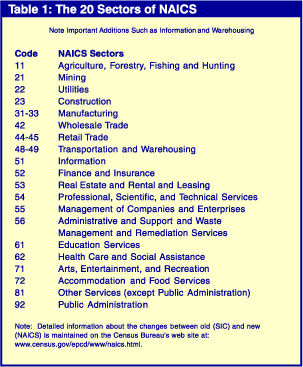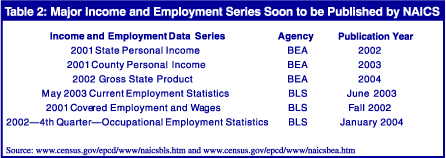NAICS: It's Not a Disease, But It Will Be Contagious
First in the NAICS Series
NAICS, the North American Industry Classification System, is a new method of categorizing industries, devised by the U.S., Mexican and Canadian governments. It replaces the SIC (Standard Industrial Classifications) codes. Such classifications are important to businesses seeking competitive intelligence or business leads; to government and academics tracking trends in jobs and wages for policy and research purposes; and to economic developers in understanding the structure of their economies and their regional, state and national context.
NAICS (pronounced 'nakes') identifies hundreds of new, emerging and advanced technology industries through 20 broad divisions (compared to nine divisions under SIC). It also provides direct comparison between our NAFTA trading partners, Mexico and Canada.
The new code scheme has, for the most part, affected only the 1997 Economic Censuses and County Business Patterns so far. But soon, we will begin to see a new set of industries with the monthly, quarterly and annual data released by the Bureaus of Labor Statistics (BLS) and Economic Analysis (BEA).
There is a downside to the release of data using the new classification system—lack of comparable trends data. There were significant changes in all of the industry divisions, meaning that manufacturing under NAICS is different, as are the other nine divisions that became 20. Many agencies don't plan to publish dual sets of data, for the obvious reason of expense as well as the need to move forward with this more refined view of our economy (see Table 1).

Table 2 is a schedule of data series and the dates of their release under the new code scheme. For those of our readers who are frequent users of data online (via STATS Indiana, for example), we recommend that you keep this calendar handy.

